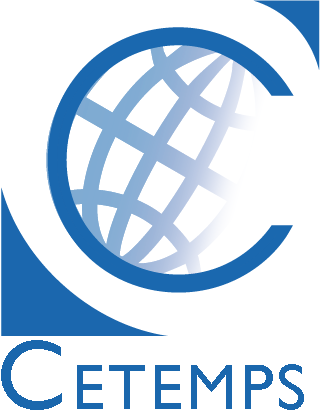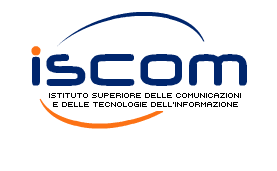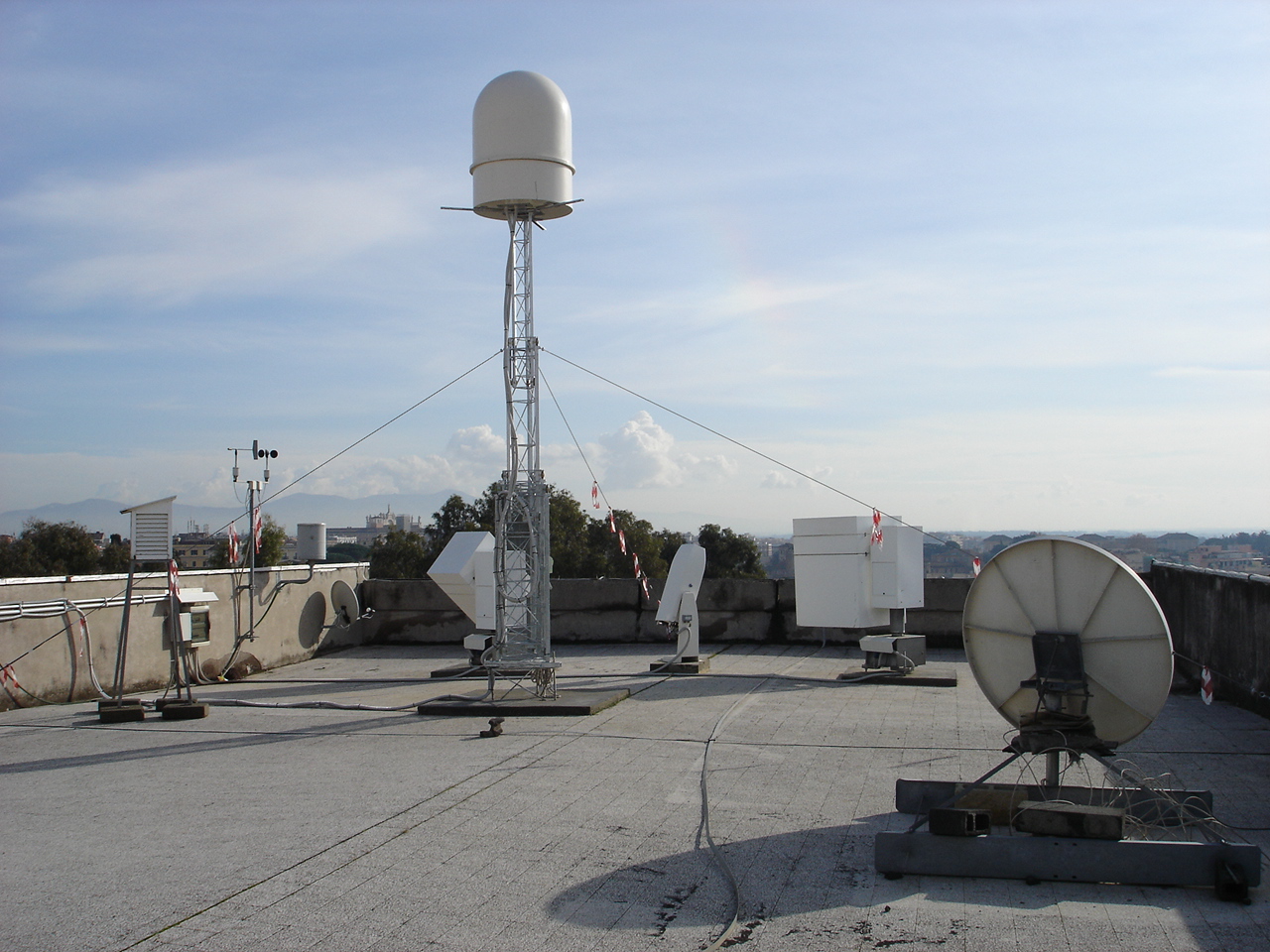|

Dip. di Ingegneria dell'Informazione Università
di Roma Sapienza
CRAS - Centro Ricerche Aerospaziali Sapienza

CETEMPS - Università dell'Aquila

Istituto Superiore
delle Comunicazioni e delle Tecnologie dell'Informazione (ISCOM)

Fondazione Ugo Bordoni
|
Joint
Laboratory on
Antennas & Propagation
(JLabAP)
Coordinator: F. S. Marzano (DIET/CETEMPS)
Steering
Committe:
M. Biscarini (DIET), N. Pierdicca (DIET)
G. Fusco (ISCOM), S. Di Bartolo
(ISCOM)
F. Consalvi
(FUB), M. Montopoli (CNR/CETEMPS)
Contacts:
frank.marzano@uniroma1.it, +39.06.44585847, 320.4357254
marianna.biscarini@uniroma1.it, +39.06.44585845
fconsalvi@fub.it,
+39.06.54802117
gianmarco.fusco@mise.gov.it,
+39. 06.54442764
silvia.dibartolo@mise.gov.it,
+39. 06.54444364
m.montopoli@isac.cnr.it,
+39. 0862.433073

A
research perspective
|
JLabAP
OBJECTIVES
The
Laboratory is a joint initiative of DIET/CRAS, ISCOM and FUB to exploit antennas
and propagation systems design and realization for telecommunication and remote
sensing purposes.
The
JLabAP has the following objectives:
to
support and foster higher education in antennas and propagation;
to design
and develop new microwave remote sensing instrumentation;
to devise new algorithms to couple atmospheric models and electromgnaetic waves
to operate
as a ground-based facility for satellite product validation;
to pursue
the use of microwave systems for
communication applications;
to pursue
the use of optical systems for
communication applications.
The Joint
Lab operates in different sites:
|
-
DIET/CRAS, Sapienza University at Via
Eudossiana 18, 00184 ROMA
|
|
|
-
ISCOM/FUB, Viale America 201, 00144 ROMA
- CETEMPS, Via Vetoio 1, 67100 L'Aquila
|
|
JLabAP
FACILITIES
> DIET/CRAS. A section of the Joint Laboratory is placed at the roof terrace of the Faculty of
Engineering of the Sapienza University of Rome. The test site is
exactly located at: Latitude 41° 53’ 37 N, Longitude 12° 29’ 38 E. The position of the Laboratory is amazing as
it is on the top of the highest historical hills of Rome, Colle Fagutal.
The view of the old city of Rome is unique, but also the optical visibility is very attractive both towards
the Tyrrenian sea and the Appenine range. The LabRadioMet
enumerates both in situ meteorological instrumentation coupled with microwave and optical sensors.
> ISCOM/FUB. A section of the Joint Laboratory
is placed at the ISCOM Laboratorio di Microonde. The latter includes
instrumentation for microwave measurements up to 120 GHz, besides a
semi-anhecoic and fully-anhecoic chamber for antennas measurements. An
optical link at 1550 nm is also managed by ISCOM coupled with a
meteorological station and atmospheric/radiation sensors.
> CETEMPS.
A section of the Joint Laboratory is placed at the CETEMPS Laboratory
of Radar and Satellite meteorology. The latter includes the capability to run
hydro-meteorological forecast models, management of ground-based remote sensing
instrumentation and satellite data.
|

JLabAP
at Via Eudossiana 18, Roma

JLabAP
at Viale America 201, Roma

JLabAP
at Via Vetoio 1, L'Aquila
|
JLabAP
EDUCATION
The
JLabAP is aimet at establishing a cooperation for undergraduate, graduate
and doctoral education programs.
Current
activities include:
Laboratory
training within the “Antennas” course at Sapienza University
Laboratory
training within the “Radiopropagation” at Sapienza University
Bachelor
Theses (Laurea) on radiopropagation and
microwave systems
Bachelor
Theses (Laurea) on optical links
Master
Theses (Laurea Magistrale) on
radiopropagation and systems
Master
Theses (Laurea Magistrale) on optical
links
PhD programs (Dottorati di ricerca) on antennas and propagation
Within the
JLabAP tasks, there are also educational purposes. So far several
undergraduatestudents, graduate students and Ph.D. students have been
working on the topics of interest of the Joint Laboratory.
Graduate students
- Nov.-Dec. 2010: G. Lavacca, AlphaSat link budget analysis
- Feb.-Mar. 2011: V. Fioretti, FSO link modeling
- Feb.-Sep. 2011: P. Salemme, AlphaSat receiver station feasibility
- Feb.-Sep. 2011: G. Caronia, FSO link modeling and experimental analysis
- Jun.-Dec. 2011: A. Marziani, Ka-band AlphaSat receiver station
- Jan.-Dec. 2012: G. Palermo, AlphaSat antennas and receiver station
- Jul. 2017 - 2020 : A. Marziani, Ka-band AlphaSat receiver station
|
Educational
activities
LABORATORIO
INTERDISCIPLINARE - ANTENNE
Corso di Antenne (in Italian)
Il
Laboratario interdisciplanare – Antenne prevede un ciclo di seminari su
misure di parametri caratteristici di sistemi a radiofrequenza
(ricevitori satellitari in banda Ka) con prove di laboratorio presso l'Istituto
Superiore delle Comunicazioni (ISCOM) a Roma (fermata metro B EUR
Palasport) e seminari (da confermare) su antenne per misure di campo
elettromagnetico in ambiente urbano, su simulatori CAD per
antenne lineari, su antenne per applicazioni spaziali, e su antenne
per sistemi di trasmissione a radiofrequenza.
La
prenotazione elettronica del Lab. Interdisciplinare di Antenne è possibile attraverso posta
elettronica o lista distribuita in aula, fornendo gli estremi di un
documento. Delle 4 sedute (lezione, visita, 2 seminari) è possibile
solo 1 assenza; la visita presso ISCOM è obbligatoria.
|
JLabAP
RESEARCH
The
Joint Laboratory current research concerns radiopropgation, free space optics and remote sensing of the atmosphere from ground-based, airborne,
and space-borne platforms, with a particular focus on clouds and
precipitation using microwave and infrared data, development of inversion
methods, and radiative transfer modelling of absorbing and scattering media. Other
main topics of interest are radiometeorology for rain, wind and ash
retrieval and synthetic aperture radar data processing for land-use
applications.
The
Joint Laboratory is deeply involved in propagation and communication studies,
including e.m. field scintillation and rain fading modelling and data
analysis along satellite microwave and millimeter-wave links, but also terrestrial free-space-optics (FSO) links.
Main projects are:
AlphaSat and LEO/MEO propagation experiment
Design
and realization of a receiving station at 39.4 GHz and link budget analysis
Design
and realization of a millimeter-wave radiometric calibrator at 90 GHz
European COST actions
Participation to the space-to-earth working group
Participation to the FSO working group
FSO link
characterization
Experimental actovity on 1550 nm link at 1.5 Gbs between EUR-Fungo and Ministero sviluppo Economico
Modeling weather effects on FSO and BER/QoS performances
|
JLabAP PUBLICATIONS
> See https://cispio.diet.uniroma1.it/marzano/#pubblicazioni.
| |